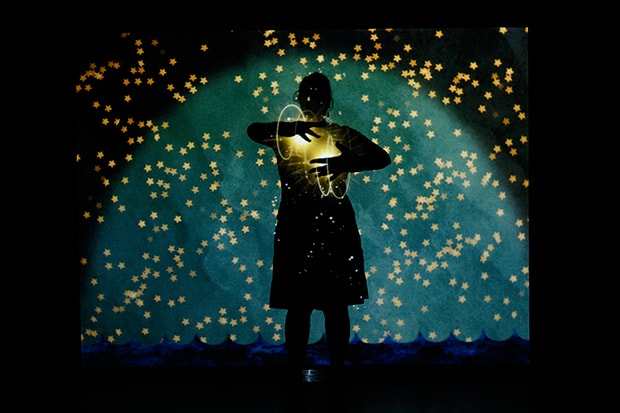“I’m a spiritual slut,” said Sister Krissy Fiction, the Nun Who Got Nailed, to me matter-of-factly one day. Like the Sisters themselves, this comment was composed of simultaneous humor and earnestness. She explained further: “I’m fluent in Christianity and fluent in neopaganism, and can kind of ask where the bathroom is in Buddhism.”1 Sister Krissy is a thoughtful commentator on religion, as well as a case study of the individual in postsecular society, who has been a superb interlocutor for me as I work to understand the international order of “twenty-first century queer nuns” known as the Sisters of Perpetual Indulgence. To me, this group exemplifies the necessity of further extending within religious studies a queer approach to method that Lynne Huffer has termed “a promiscuous mingling of multiple methods and perspectives.”2 Beyond interdisciplinarity, to me this approach signifies transdisciplinarity—not just a meeting of disciplinary minds but a dissolution of the artificial boundaries that separate those disciplines. Like rivers escaping their banks to flow into each other, this unruly approach to methods seems to me particularly appropriate for both queer studies and religious studies, and even more so for those of us who work at the intersection of those two fields. There is such diversity in queer studies in religion—topically, perspectivally, methodologically—that today I would not dare to attempt the kind of overview of the field that I wrote ten years ago, much less to issue a single agenda for our future.3 Instead, I use my own work with the Sisters as a brief case study here, in order to demonstrate a few among multitudes of the ways in which queer and gender theories, religious studies, postcolonial theory, critical race theory, and work on the postsecular can inform each other in methodologically promiscuous ways.
Queer and gender theories, and especially ideas about performance and performativity, have been critical to my understanding of the complex dynamics involved in the Sisters’ highly sexualized invocation of the figure of the Roman Catholic nun. Religious studies alone cannot offer the analytical tools I need to think through what I call the Sisters’ “serious parody” of nuns; it takes queer studies perspectives to unpack the performative nature of these sex-positive community activists. At the same time, without my training in religious studies I would simply see the Sisters as “nun drag”—a term the Sisters use playfully among themselves, but also one they ultimately reject as a comprehensive description of their work. Without religious studies as a lens, I might have missed the fact that many Sisters describe their work with the order as a part of their spiritual practice, or as their spirituality. And it’s worth adding that without my training and ongoing conversations in sociological circles (a background that sparked very public protests from some faculty in the humanities division when I was hired into my first tenure-track position), I would have missed much of the conversation around postsecularism that has proven so critical to my understanding of the broader context and relevance of LGBTQ religiosities. In these “queer times,” as Jasbir Puar calls them,4 what better image can there be of the blurred lines between secular and sacred than the vowed and veiled queer nun, cigarette dangling from her fingers and bulky purse over her arm, doling out condoms and dishing up sexy safety advice to scantily clothed bar patrons late on a Saturday night?
My invocation of Jasbir Puar’s Terrorist Assemblages is intentional here, for Puar shows us that the links between religion and queerness can be far more ominous and destructive than the Sisters’ glittery exhortations to “go forth and sin some more.” Indeed, Puar and other contemporary leaders in queer studies have strengthened this field in important ways through their insistence that queer analysis devoid of critical perspectives on race and on post- and neo-colonial realities is inadequate at the least and is quite often both irresponsible and dangerous. So, in what ways can critical race theory and postcolonial theory inform the analysis of a queerly religious group like the Sisters?
One area of significant interest for me is the symbolic import of a largely white group that serves largely white communities wearing whiteface makeup. Of course such makeup is symbolically polyvalent, indicating figures such as clowns or mimes to some and evoking Noh Theater for others. Yet the short-lived use of blackface by one early white Sister hints at the possibility that, like the black makeup that Sister donned, the whiteface worn by most Sisters today may also have racial undertones. Many Sisters of color find such implications obvious, as their skin tone disappears under literal whitewashing whenever they “get in face,” and no small number have engaged with that whitewashing in creative and resistant ways—from the African American Sister who covers all of her skin, wears tinted contact lenses, and then uses speech patterns to indicate to startled interlocutors that she is not white, to the Filipina Sister who uses a delicate filigree pattern that allows her own skin tone to show through, to the Chicana Sister who sees in the whiteface a reference to Día de los Muertos skulls and decorates her face accordingly.
Furthermore, while comparisons to Noh actors are fairly rare among the Sisters, many white-identified Sisters speak of themselves not only as clowns but as “sacred clowns.” As Scott Lauria Morgensen has pointed out, much of contemporary folk history in non-Native LGBTQ circles, particularly but not solely in the U.S., appropriates, misinterprets, and rewrites Native histories within the context of a settler colonial society, claiming that history for non-Native people while simultaneously effacing the existence of living Native people.5 While this colonial reinvention of “queer” history takes place in many non-Native queer communities it has been promoted particularly strongly by the Radical Faeries, a group with significant influence on and shared history with the Sisters. Indeed, one Sister recounts the non-Native sacred story of the “berdache” in a widely-viewed video on her YouTube channel.6
Sacred clowns as well as nuns? Whiteface makeup on faces of all colors, but in spaces where those with brown faces are regularly erased, excluded, or attacked? These complexities demand an analysis that I cannot productively undertake without the help of critical race theory, postcolonial theory, and critical studies of settler colonialism, as well as work by scholars who have brought such perspectives into a deeper conversation with queer theory. But there are further complexities as well. For instance, there is at least one active house of Sisters in South America (in Uruguay)—how do these dynamics play out there? What are the impacts of globalization and neoliberal policies and politics on the Sisters’ work in such settings? In what ways do the Sisters resist and reinscribe these global dynamics of power? Again, the tools of a single field prove inadequate to address such questions.
I believe that the methodological and theoretical promiscuities that currently characterize much of queer studies are a sign of the field’s strength. Religious studies, too, has long practiced such promiscuity, even when it doesn’t know quite what to do with the children of its many and varied unions. An increasing number of scholars are insisting that these two promiscuous areas of study need to hook up—or perhaps make an even longer-lasting polyamorous commitment. As I have shown here, albeit briefly, cultural phenomena like the Sisters of Perpetual Indulgence are difficult to analyze fully without such methodological promiscuity. Perhaps, in the end, this undisciplined orgy of theories and methods is itself an agenda for the future of queer studies in religion.
- Sister Krissy Fiction, Order of Benevolent Bliss (Portland, Oregon), interview with the author, November 1, 2009. [↩]
- Lynne Huffer, Mad for Foucault: Rethinking the Foundations of Queer Theory (New York: Columbia University Press, 2010), 136. [↩]
- See Melissa M. Wilcox, “Outlaws or In-Laws? Queer Theory, LGBT Studies, and Religious Studies,” Journal of Homosexuality 52, nos. ½ (2006): 73-100. [↩]
- Jasbir K. Puar, Terrorist Assemblages: Homonationalism in Queer Times (Durham, N.C.: Duke University Press, 2007). [↩]
- Scott Lauria Morgensen, Spaces Between Us: Queer Settler Colonialism and Indigenous Decolonization (Minneapolis: University of Minnesota Press, 2011). [↩]
- Sister Unity Divine, “Berdache, the Holy Gay,” November 1st 2007. [↩]




